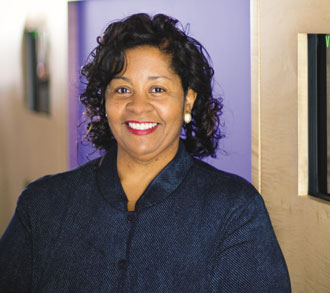 Multi-Platform
Multi-Platform
Geri Coleman Tucker '74 describes herself as "always a writer" at heart. After her first job at the Akron Beacon-Journal, she moved to the Detroit Free Press, eventually ending up at USA Today. As the deputy managing editor of the paper's Money section, she oversees editors who lead coverage in the automotive industry, the economy, personal finance, technology, and media and advertising.
USA Today is known (and, in journalistic circles, sometimes criticized) for keeping stories short. Can it tackle complex subjects? I think we give news the length that it needs, without pontificating, without belaboring points. We try to be concise, but also complete. Some of our more complex stories are closing in on the same length that you would see in newspapers like the Wall Street Journal or Washington Post. But on other stories you'll see that we choose alternative story-telling methods, like graphics, to capture some of the news. If you want a quick read, you can do that, but if you want more, it is there.
People can get instant business news on television or the Web. Why do they need USA Today? USA Today is very much multi-platform; it is not just a print product. Our first take on a breaking news story is on the Web, so we are out there at the same time as the news channels. In tech coverage, we have "Technology Live," which is a blog that we use to hit news that we will follow later in the paper, or maybe something we're not even going to cover in print. On the news side, we have a similar blog called "On Deadline," which will shoot you the latest news so that you're up to date. We're also starting to write for other formats, like mobile phones and PDAs. What reporters are writing for the Web, someone else is writing smaller or resizing and reconfiguring for those devices. We also have an in-elevator TV service, where some of our stories are being reconfigured and written for the small screen. We're definitely not just a print product.
Given the explosion of these other vehicles for news, do you think there will continue to be a need for the printed paper? I do. I know there are some naysayers out there, but I love the feel of a newspaper in my hand. I like the portability of it, the sense that if I don't have time to read it today, I can come back two days later and it is easy to find. I think there will always be a desire, and in some cases a love, for the print product.
USA Today has always been a leader in design. What changes are in store? We will always work to make our newspaper easier to read and visually interesting. But in the past year, more of our attention has been on our Web site rather than on print design. We're finding more ways for readers to interact with each other on the Web, to interact with reporters and editors, and to provide more transparency between what we do and what they see. We're giving readers a chance to give more feedback, to get more involved. For instance, at the top of some of our Web pages, we have quotes from readers about stories they read. We also have a lot more interactive graphics on the Web. For example, if we have a story that involves statistics from many states, usually you can drill down to your state and find out specifics about what's going on where you live.
Do you think journalism is still a good career choice for Kenyon students? I hope they see the same optimistic and bright future for journalism that I still see. It is going to continue to be an exciting career, but it is going to be different. New journalists now are finding that just being a good writer and having an inquisitive mind are not enough. They need to have other skills, both in print and online. They are learning different kinds of software, they are learning how to carry a camera and shoot video. These are the kinds of new skills that will be mandatory for entry-level journalists in the future. But I think it is an even more exciting field now than it was when I got started in it years ago, and I hope that there's the same optimism.
Do you have feedback on this page?
